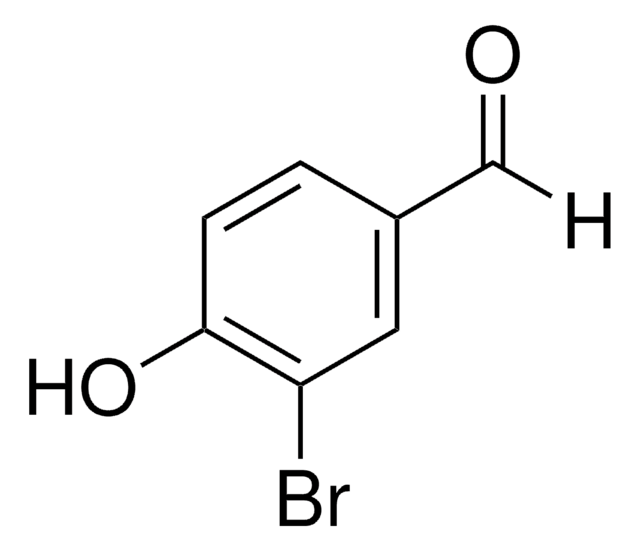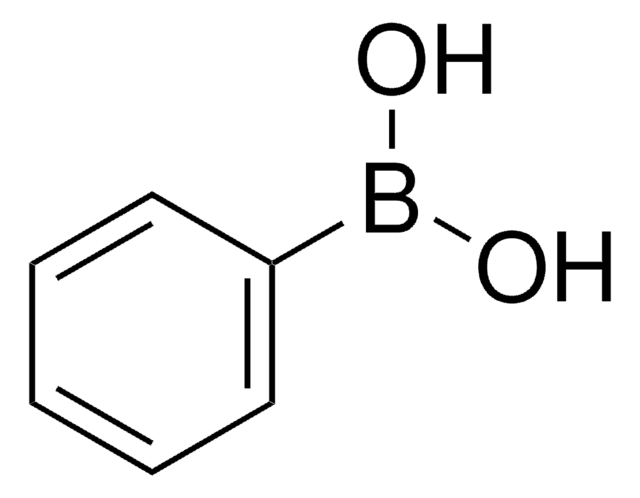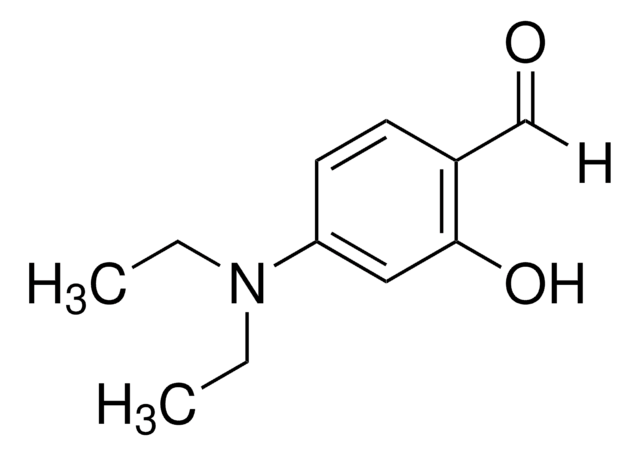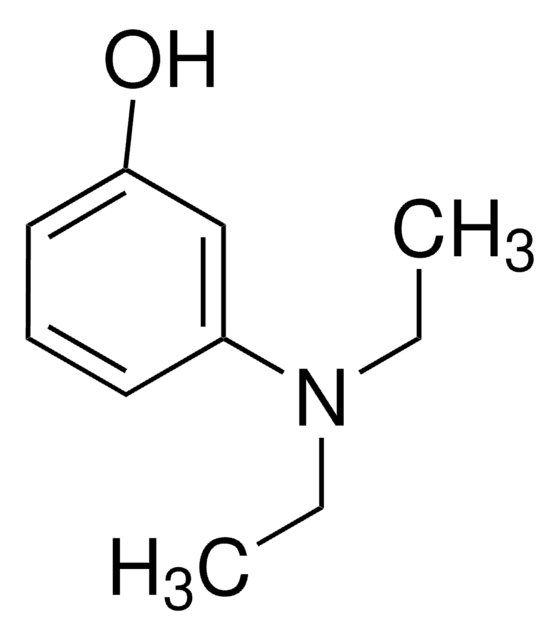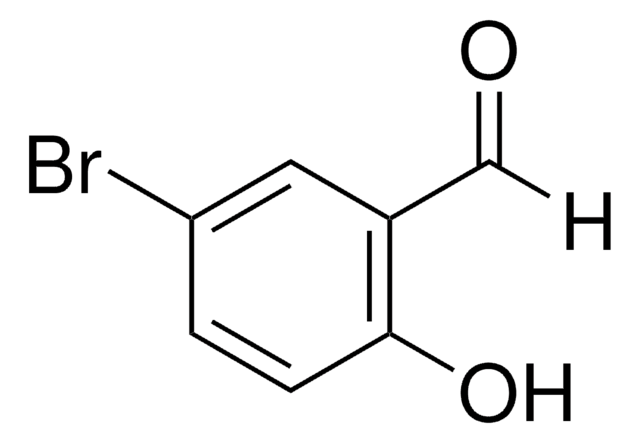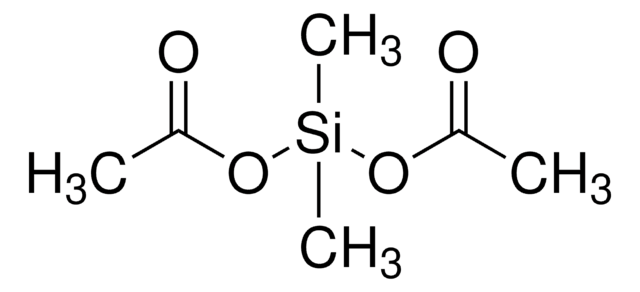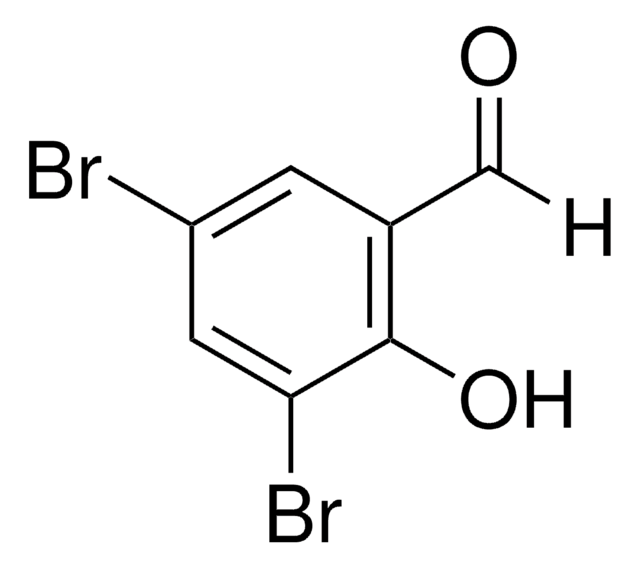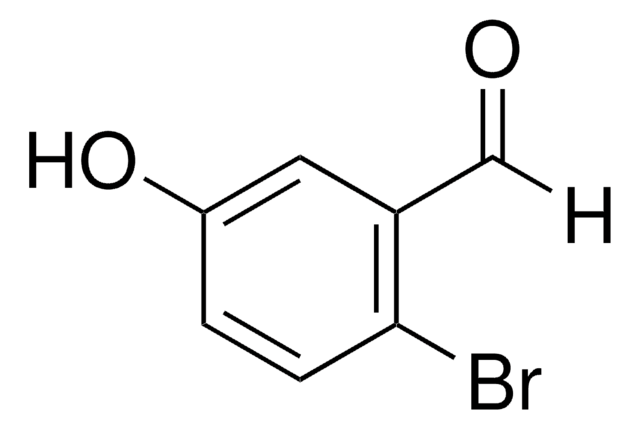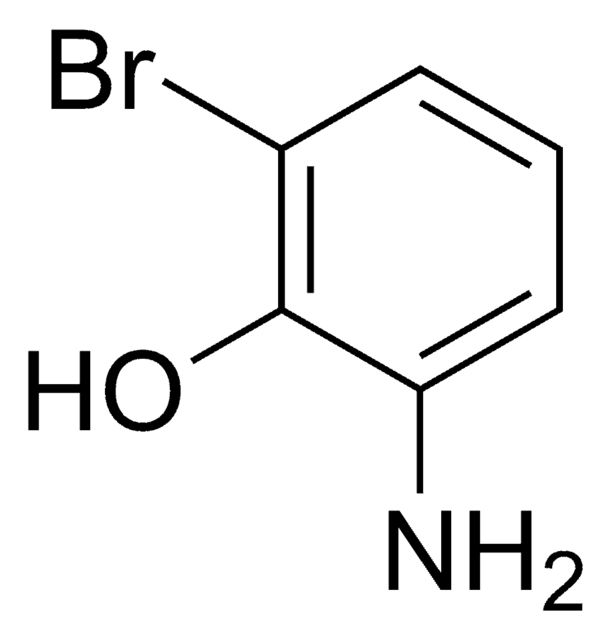All Photos(1)
About This Item
Linear Formula:
Br2C6H2(OH)CHO
CAS Number:
Molecular Weight:
279.91
EC Number:
MDL number:
UNSPSC Code:
12352100
PubChem Substance ID:
NACRES:
NA.22
Recommended Products
Quality Level
Assay
98%
mp
181-185 °C (lit.)
functional group
aldehyde
bromo
SMILES string
Oc1c(Br)cc(C=O)cc1Br
InChI
1S/C7H4Br2O2/c8-5-1-4(3-10)2-6(9)7(5)11/h1-3,11H
InChI key
SXRHGLQCOLNZPT-UHFFFAOYSA-N
Looking for similar products? Visit Product Comparison Guide
Related Categories
Signal Word
Warning
Hazard Statements
Precautionary Statements
Hazard Classifications
Eye Irrit. 2 - Skin Irrit. 2 - STOT SE 3
Target Organs
Respiratory system
Storage Class Code
11 - Combustible Solids
WGK
WGK 3
Flash Point(F)
Not applicable
Flash Point(C)
Not applicable
Personal Protective Equipment
dust mask type N95 (US), Eyeshields, Gloves
Choose from one of the most recent versions:
Already Own This Product?
Find documentation for the products that you have recently purchased in the Document Library.
Huirong Zhang et al.
PloS one, 12(10), e0185783-e0185783 (2017-10-04)
Sexually transmitted Chlamydia trachomatis is an extremely common infection and often leads to serious complications including infertility and pelvic inflammatory syndrome. Several broad-spectrum antibiotics are currently used to treat C. trachomatis. Although effective, they also kill beneficial vaginal lactobacilli. Two
Synthesis of 3, 4, 5-Trimethoxybenzaldehyde.
Manchand PS, et al.
Synthetic Communications, 20(17), 2659-2666 (1990)
An expeditious synthesis of syringaldehyde from para-cresol.
Tripathi AK, et al.
Indian J. Chem. B, 49(3), 379-379 (2010)
Mengting Yang et al.
Environmental science & technology, 47(19), 10868-10876 (2013-09-13)
Using seawater for toilet flushing may introduce high levels of bromide and iodide into a city's sewage treatment works, and result in the formation of brominated and iodinated disinfection byproducts (DBPs) during chlorination to disinfect sewage effluents. In a previous
Zhenxuan Zhang et al.
Water research, 170, 115283-115283 (2019-11-19)
Halogenated aromatic disinfection byproducts (DBPs) are a new group of emerging DBPs identified recently. They have been detected in disinfected drinking water, wastewater effluents, recreational water and oil/gas produced water, at concentrations of ng/L to μg/L in general. Previously studies
Our team of scientists has experience in all areas of research including Life Science, Material Science, Chemical Synthesis, Chromatography, Analytical and many others.
Contact Technical Service